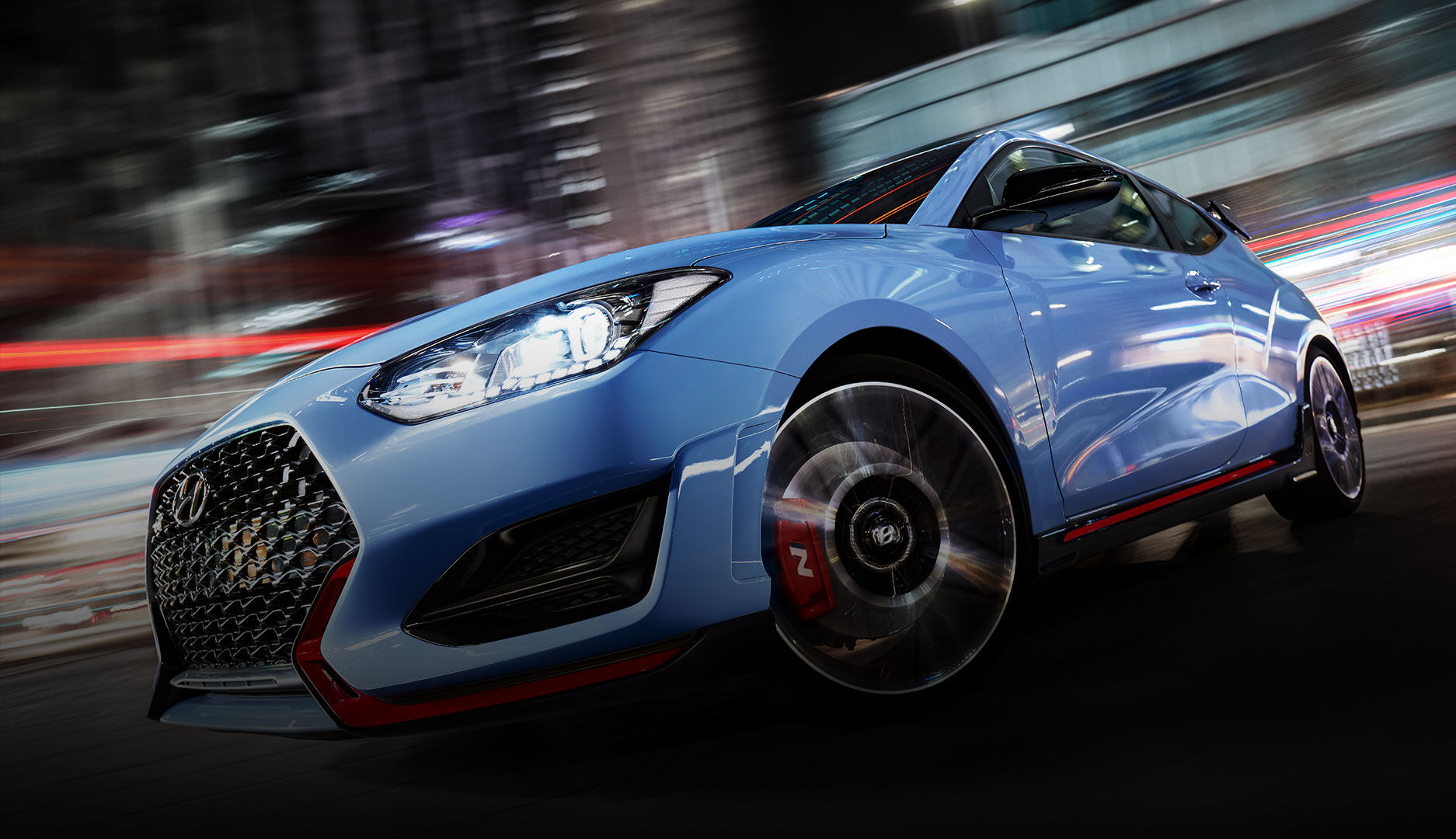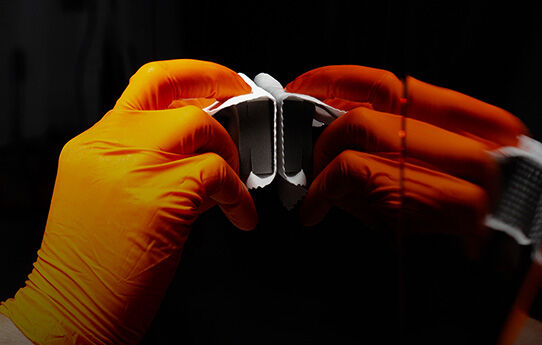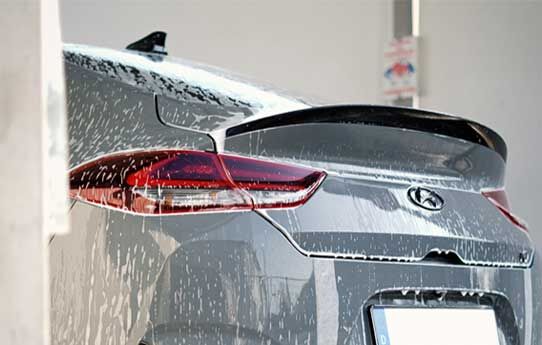24 Sep 2020
There’s a lot more to braking than meets the eye. It might look simple and straightforward, but there is actually a wide range of techniques — those you use for safety and can help extend the life of your brakes, as well as those that help you master cornering on the road or track.

Braking tips & techniques for the road
1. Plan ahead and be aware of your surroundings as you drive
It’s easier to drive and brake safely if you’re aware of your surroundings and know where you’re going. You’ll be able to anticipate when you need to slow down, so you can brake gently and steadily before a turn or traffic light. This not only reduces the wear and tear on your brakes, but also keeps you and others safe. A win-win.
2. Go light on the brake pedal
There’s no need to have a heavy foot on the pedal, so try not to brake too hard or suddenly. It’s not only rough on the brakes, but it can also be dangerous, as drivers behind you may not have enough time to react. Instead, keep your foot light on the pedal. Braking early and smoothly gives other drivers a heads-up and can prevent accidents. Hard braking should really only be used in emergencies.
3. Let off the gas first
When you let off the gas pedal, the car starts to slow down on its own, which means you don’t need as much braking power to further slow it down or come to a complete stop. For example, if you see a turn or traffic light up ahead, start letting off the gas first and then switch to the brake pedal for smoother braking and less brake damage. Sometimes simply letting off the gas without using your brakes can be enough to slow the car down.
4. Use steady pressure
In order to slow down while being gentle on the brakes, try to steadily increase the amount of pressure. So when you’re driving at high speeds, you can start by gently applying pressure and then apply more pressure as the car slows down.
Braking tips & techniques for the track
Now that we’ve gone through smooth and safe braking on the road, let’s talk about braking techniques that will shorten your lap times on the track.

Trail Braking
What is trail braking?
Trail braking is a technique that can maximize your cornering speed if done correctly. This advanced technique focuses on braking later and lighter throughout the corner to maintain as much momentum and speed as possible. When braking normally, you brake in a straight line at full force and then come off the brake before turning the corner. But when trail braking, instead of coming off the brakes before the turn, you ease off the brake gradually as you turn into the corner. This lets you use the maximum grip of the tires when entering the corner for faster cornering.

How to trail brake
There are two main steps. First, brake with full force in a straight line when approaching the corner. Then when turning into the corner, gradually ease off the brakes while still applying enough pressure so the car doesn’t leave the track. The more you increase the steering angle, the less pressure you apply on the brakes. The right brake pressure is important here — if there’s too much or too little pressure, your car won’t make the turn and you’ll end up off the track. And as always, safety first. Make sure you have free vision, especially at the turn-in point of the corner to prevent accidents. Trail braking is challenging and requires a lot of practice, so don’t feel discouraged if you can’t master it right away.
When to use trail braking
Trail braking is a great technique for slower corners as it lets you use the maximum grip of the tires and carry as much speed as possible into the corner. Since you continuously brake as you enter the corner, trail braking is great for slower corners because it lets you transfer more grip to the front for a slight oversteer and rotate the car to quickly exit out of the corner. For fast corners, it’s better to ease off the brakes earlier to keep the car balanced and prevent any over- or understeer.
Heel and Toe
What is heel-and-toe?
The heel-and-toe is a technique that combines downshifting, rev-matching, and braking, so you need to match the engine and wheel speeds for smoother and faster downshifting.

How to heel-and-toe
Match the engine and wheel speed by using your right foot on both the brake and gas pedal at the same time. The heel of your foot is on the throttle, and the ball (“toe”) of your foot is on the brake.
- Follow these steps:
- - Before the corner, apply the brake and dip, or press, the clutch.
- - Shift to a lower gear.
- - Blip the throttle or accelerator up to the necessary rpm (depending on your speed and gear change).
- - Release the clutch.
This might sound hard, but it’s actually a pretty simple technique you can master with a bit of practice.
When to use heel-and-toe
While heel-and-toe is a must for the track and gives you a crucial time advantage, it’s also a technique you can use on your everyday drive.
Some performance cars, like Hyundai i30 N, have an automatic rev-matching feature that gets you to the fastest cornering speeds without the heel-and-toe technique. The i30 N also has a pre-fill system that uses pre-filled hydraulic fluid to increase pressure in the braking system, speeding up the response time for maximum braking and cornering.

Left-foot Braking
What is left-foot braking?
Like the name suggests, left-foot braking is simply braking with your left foot instead of your right foot. This has become more common over the years as more cars use paddle-shift gearbox systems, which removes the need for a clutch and makes it possible to just use the left foot to brake.
For cars with sequential or manual H pattern transmission systems, left-foot braking is a lot more challenging, since the left foot needs to use the clutch especially when cornering.
While many companies create cars not designed for left-foot braking, the ECU algorithm in Hyundai N cars was specifically changed so you can use this technique to brake faster on the road and track.

Overall, left-foot braking is faster than regular right-foot braking because you have one foot completely focused on braking, instead of using one foot for both braking and accelerating. This helps you feel the optimal braking pressure, and it also reduces the transition time you would need to take your right foot off the gas before placing it on the brake. Don’t forget that you need to be able to get the feel for it in your left foot in order to brake quicker and smoother.

How to left-foot brake
The technique itself is pretty straightforward — it’s really all about practice. Make sure to practice somewhere safe before trying it out on the track or busy roads. When you first practice, be as gentle and smooth as possible. It’s a common mistake to apply a similar amount of pressure on the brake as you do on the clutch. Braking doesn’t require a lot of initial pressure, so apply a little pressure at first and then gently and smoothly increase the pressure on the brakes.
When to use left-foot braking
Some braking techniques are only for certain corners or only for the track, but left-foot braking is a technique you can use anywhere if well executed. When it’s done correctly, left-foot braking helps improve your lap time on the track or even just improves your driving and cornering on the road.
Don’t forget to maintain your brakes
Last but not least, you need brakes that are in excellent condition and have maximum braking power to get the most out of your braking techniques.
To maintain your brakes, we suggest:
- Getting your brakes, brake pads, and rotors checked regularly. These parts can wear down easily and need more frequent maintenance than other car parts.
- Checking your brake fluid level and making sure you always have enough brake fluid. Follow the owner’s manual recommendations to get the fluid flushed, and make sure you’re using the right type of brake fluid for your car.
- Always checking for warning signs. If your brakes make unusual loud sounds or have less braking power than usual, or if your brake warning light is on, you should visit a mechanic as soon as possible. Brakes are extremely important for the safety of you as well as others, so don't hesitate if you notice any warning signs.
What’s the best braking technique?
Braking techniques depend on if you’re driving on the road or track, personal preference and skills, and of course the situation. Stay safe on the road with more general tips and techniques, like being aware of your surroundings and early, smooth braking. Then boost your performance on the track with the more advanced braking techniques, like trail braking, heel-and-toe, and left-foot braking. When it comes to cornering, there’s no one right answer, so practice, master, and more importantly, have fun.





